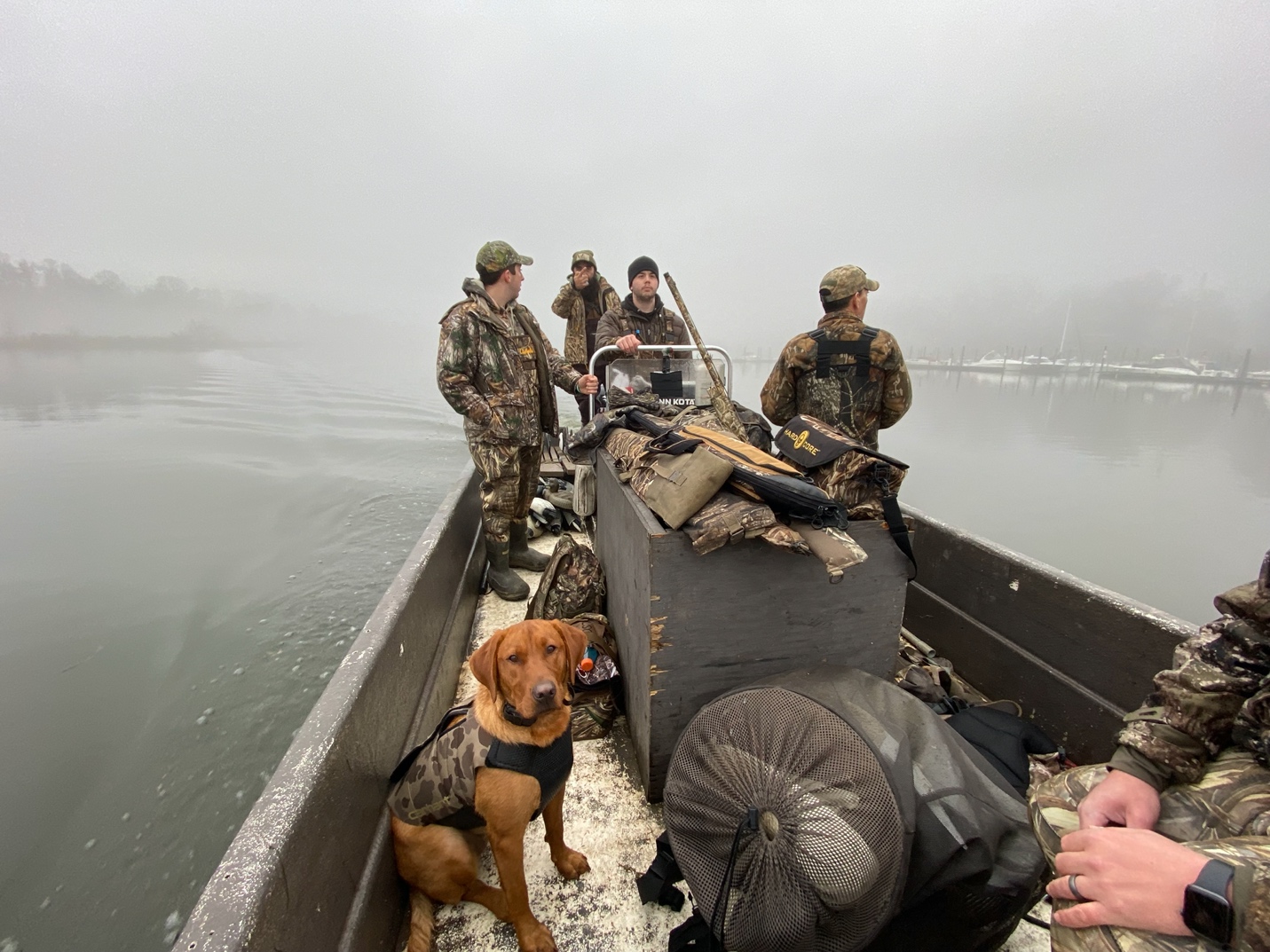In the heart of the Atlantic Flyway, you will find the historical “Mighty” Potomac River. Known for its 405-mile-long shared access to Maryland, Virginia, West Virginia, and Washington, D.C., the Potomac River is a go-to destination for nature enthusiasts, fishermen, watermen and especially waterfowl hunters.
Waterfowl hunting has a long history on the Potomac River. More specifically, The father of this country, President George Washington, was an avid duck hunter. He commonly referred to it as “a ducking,” and would target birds at the mouth of Little Hunting Creek and the cove that ran the shoreline of his Mount Vernon plantation, on the main stem of the river. Just like George in the 1700s, present-day Virginians can all agree, home is where the mighty hunt.
Skipping ahead a few centuries, my father and duck hunting mentor, John Stauch, recalled what it was like hunting these waters in the 70s and 80s.
He would set up in the marsh of Broad Creek, a well-known tributary of the river on the Maryland side. Back then, the back of the creek was an eight-foot bay of mud that opened to a narrow stream of freshwater.
With no more than a dozen decoys out, the ducks would come into Broad Creek in no time looking for acorns and fresh water. The river’s tributaries are a haven for birds trying to avoid strong winds and harsh elements when migrating.
As the 80s rolled in, an environmental study introduced hydrilla into Belmont Bay. This hydrilla bloom started the transition of the Potomac becoming a main hub for migration for our Atlantic Flyway.
Because the grass was thicker in the lower Potomac, the ducks flocked there first. While the hydrilla was spreading to more parts of the Potomac, so were the birds.
The tidal waters of the Potomac play host to an abundance of waterfowl species. In fact, Native Americans named part of the river, “Cohongarooton,” which translates to “honking geese.” So, it’s no surprise that this river is a base camp for many resident Canada geese.
My father mentions, “the goose limit back then was three a man and these same geese would be the beginning of the resident goose population we have thriving today.”
Today, the Atlantic population limit is 30 days and it’s only one goose a man.
Fortunately, one thing that seems to stay consistent with resident geese is the timing of your hunt.
Whether you’re hunting out of a stationary blind or a camo boat, you can typically target these birds from the late morning to the early afternoon or the preferred evening hunts while shooting light is extended.
However, patterning local geese is not for the faint of heart, as they tend to be much lazier and more stubborn than migrating ones. Even a focused and disciplined hunter can struggle when it comes to harvesting resident geese.
By the 90’s, duck numbers rebounded in a huge way from the drought of 1987. The daily limit changed from a point system to four ducks a man. There were even specific species that could be harvested outside of your four-duck limit, known as “bonus birds.” Each hunter was allowed an additional two ducks, as long as they were teal, gadwall, widgeon, pintail, and/or bluebills.
Recalling those days, my father told me that, “the number of mallards at this time on the river was something today’s local hunters would book an out-of-state trip for.” He continued, “As long as you had a solid plan and tactics, you could harvest your limit of mallards on almost any part of the river; whether it be a marsh, the main stem, or some back beaver pond swamp.”
In the early 2000s, the tidal Potomac saw more city developments and in 2006, the construction of the new Woodrow Wilson Bridge would cause a silt run to kill off monumental amounts of aquatic vegetation, pushing waterfowl further south.
All hunters know, as the food leaves, so do the ducks. Interesting enough, when the puddle ducks became less and less, divers grew in numbers!
Canvasbacks thrived on the Potomac. Redheads mixed in with ringnecks and bluebills started pouring in, and numbers were growing with high demand from shooters new and old. Eel grass and duck celery became a prime source of food for these birds along with hydrilla.
Nowadays the lesser scaup (bluebill/blackhead/broadbill) is the most common species on the big river, wintering over a quarter million alone, from Dykes Marsh down to the Harry Nice Bridge.
While some favor potholes and flooded fields the waterman of Virginia will always know home is where the mighty hunt! I wish you good shooting this season and invite you to join me or my guides if you’d like to see how we do it.



